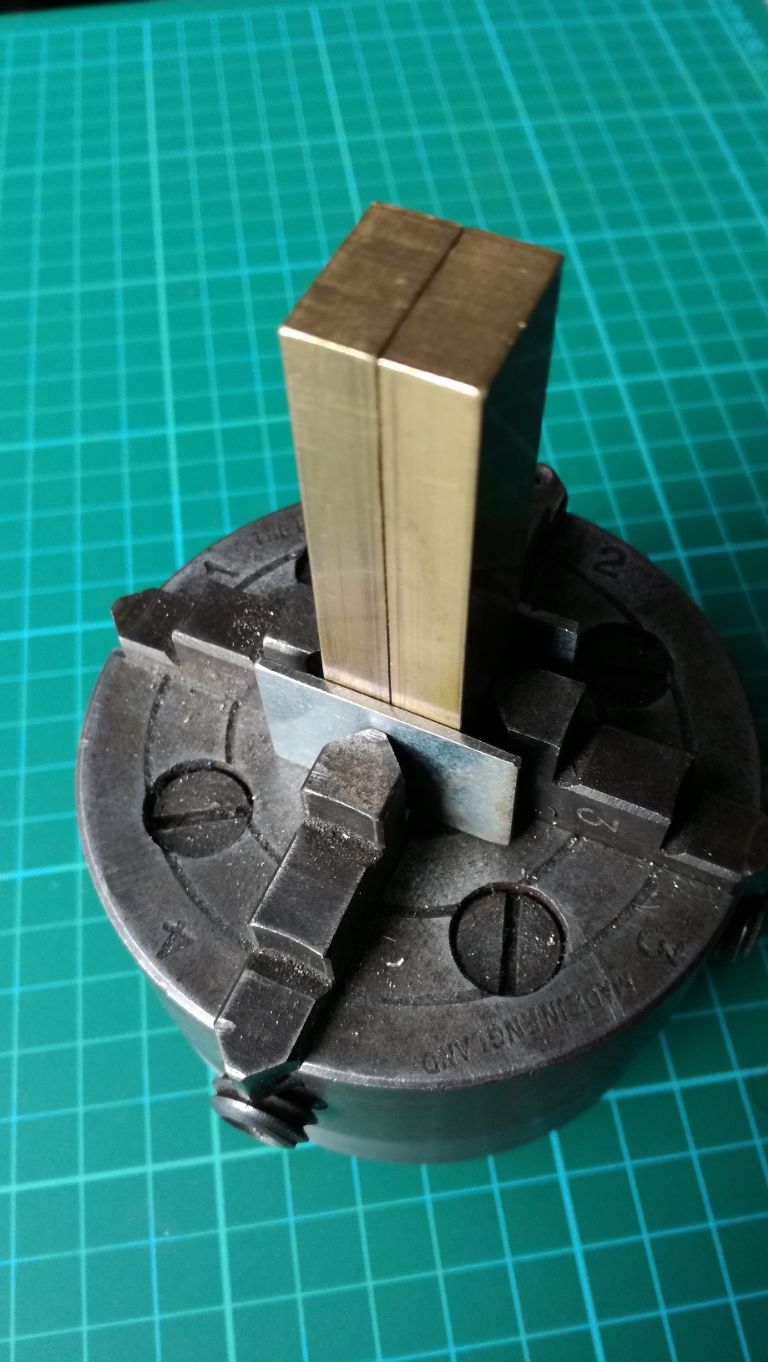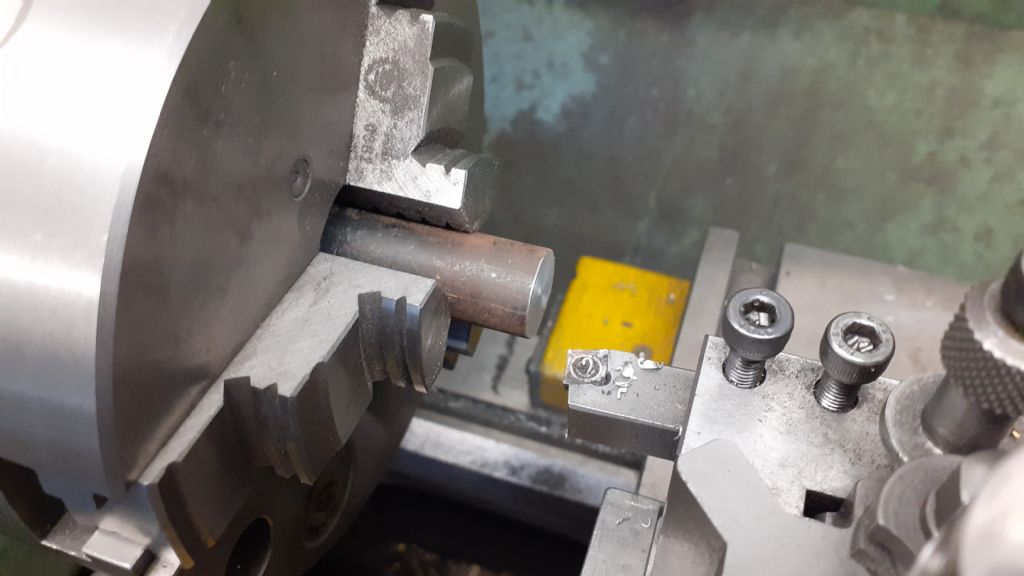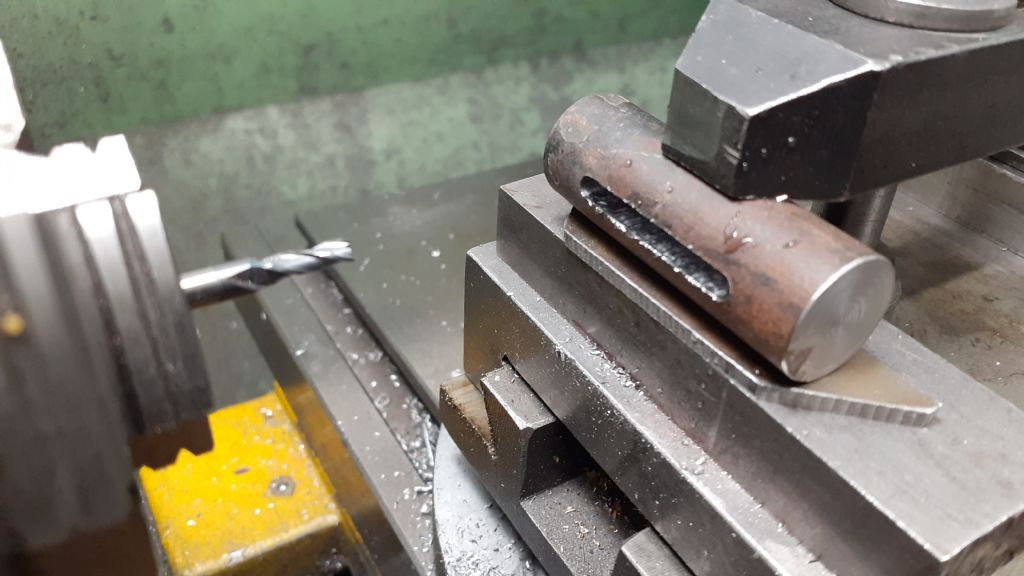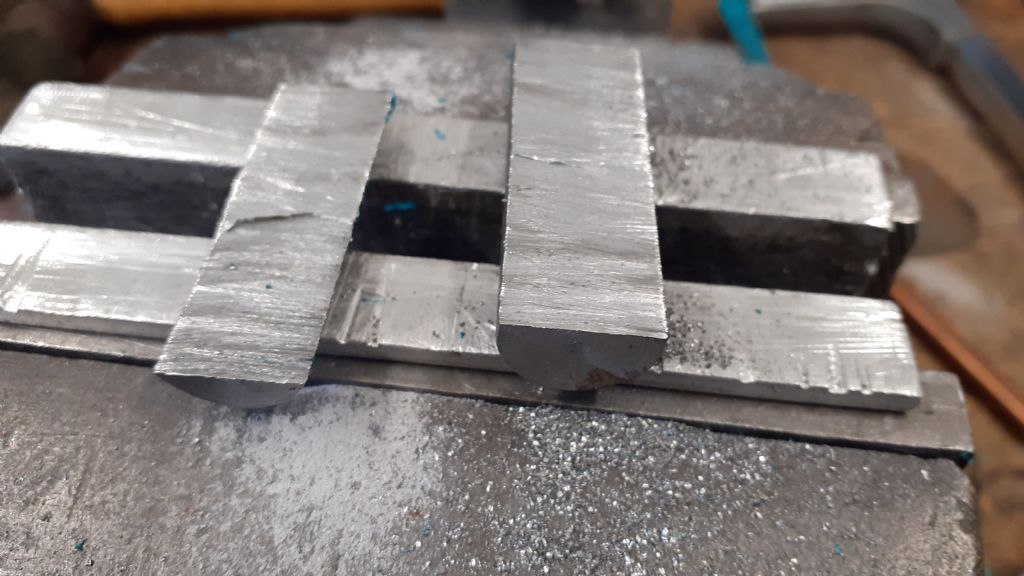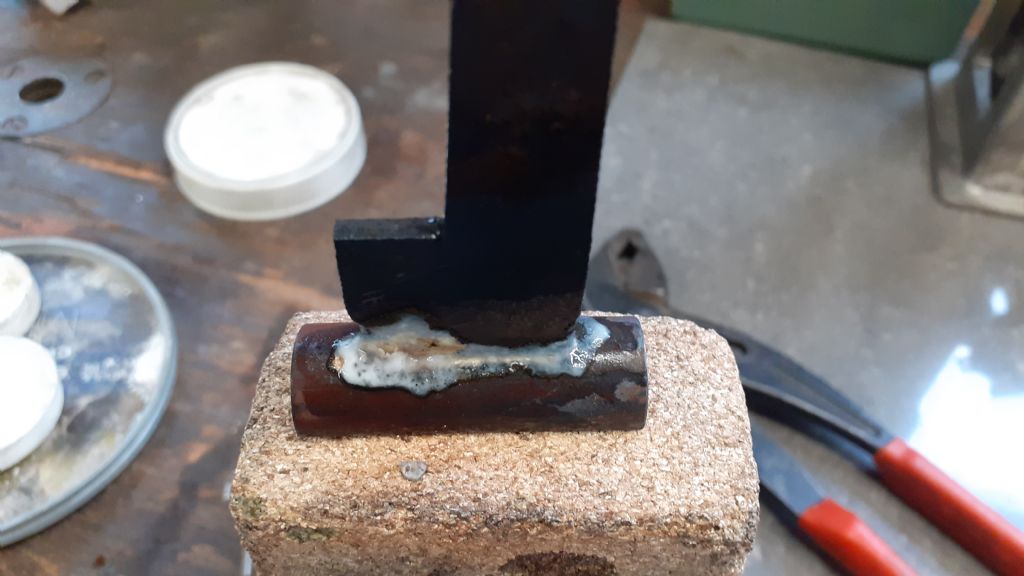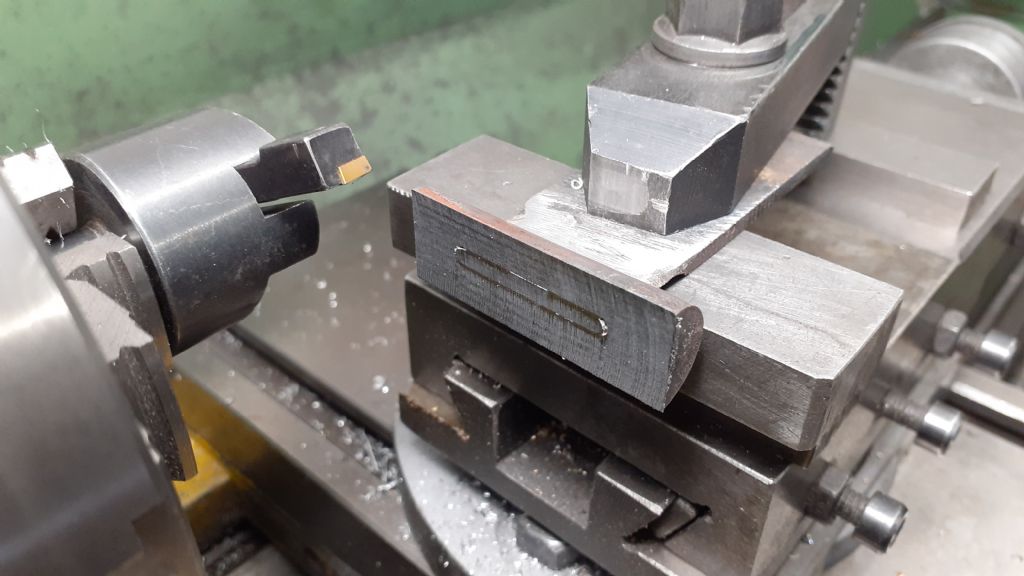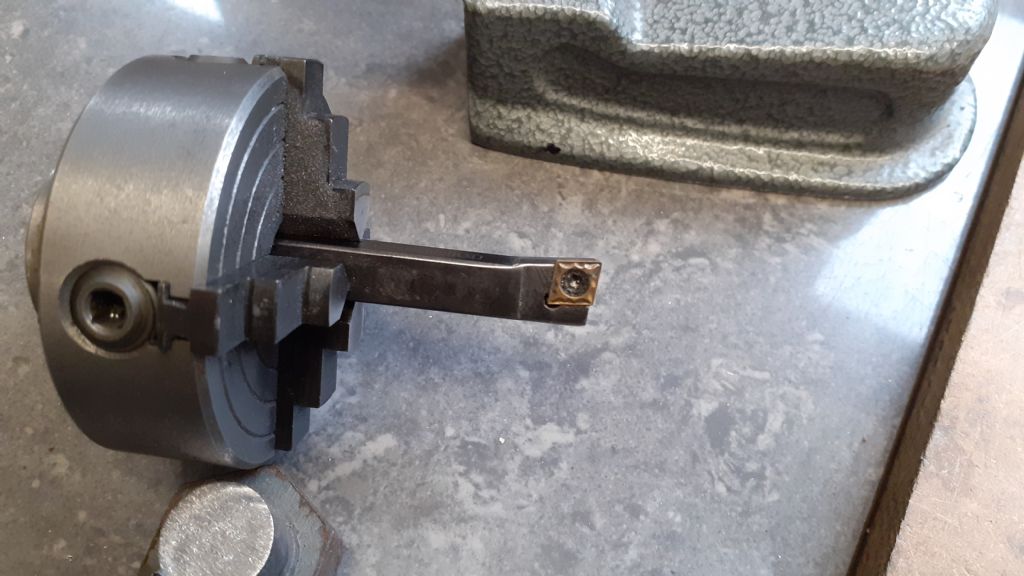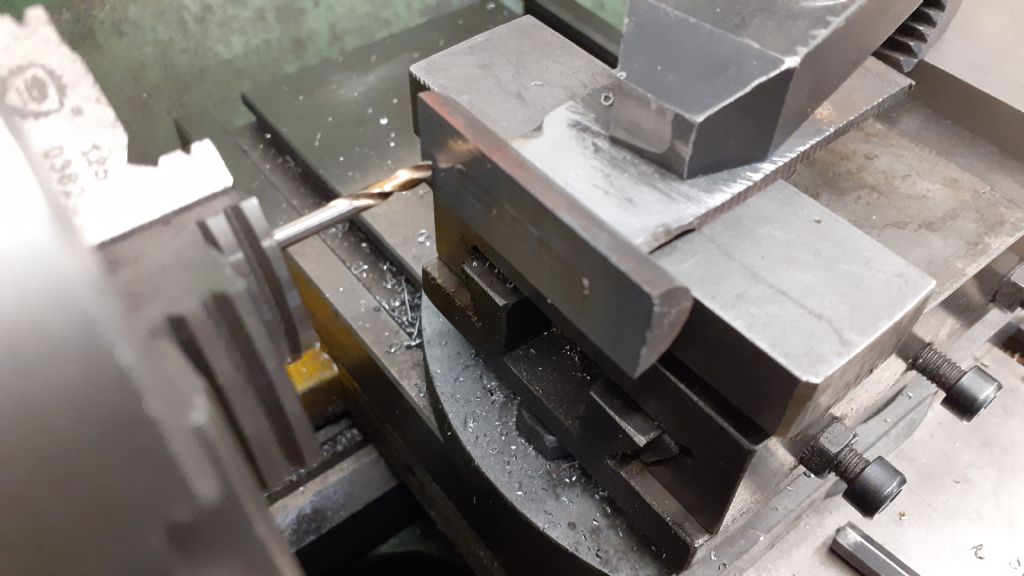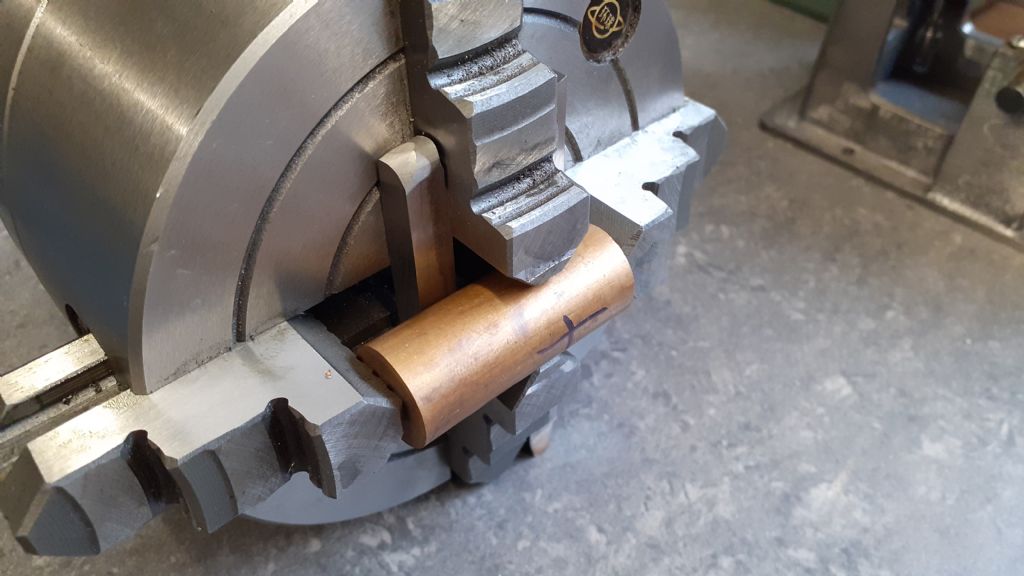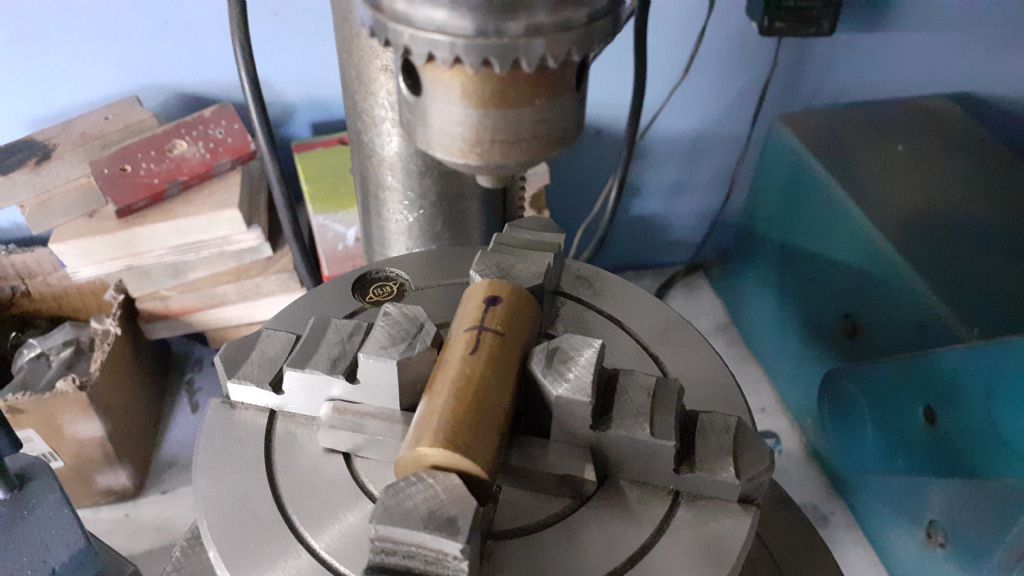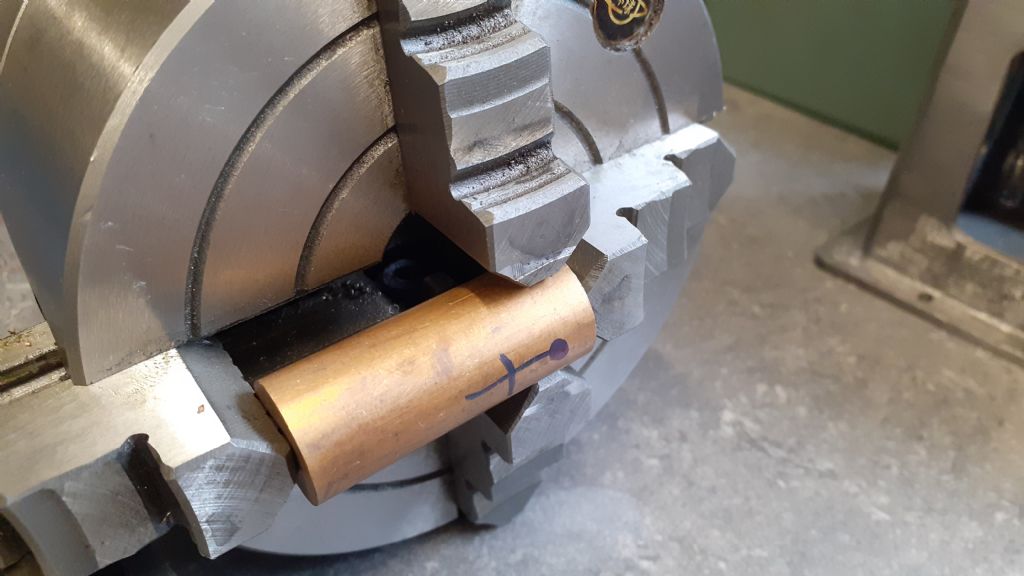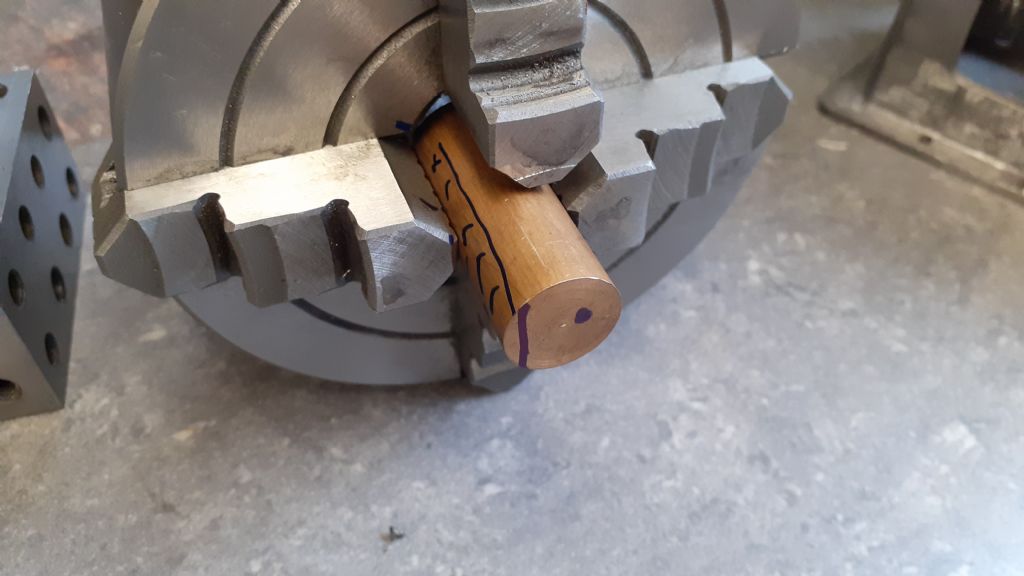Hi JasonB, OK yes there is a bit of waste but you do get two pieces to play with, whereas cutting the the bar in haft produces a bit of waste that wouldn't be any good, should the piece that has been turned to size goes wrong. I'm not saying that my idea is any better than the one that you have shown, and I understand your method, and it is a valid one, but I don't know if Paul has the equipment or the skill to do it the way you have shown. Of course with the way I've described, there is no heating involved or cleaning up once finished. Although I thought of it before reading Clive's method, using the two pieces will allow tailstock support. Now by all accounts, looking at the finished engine, it seems to me that the semi-circular piece will need a couple of tapped holes on the flat side to fix it to the base, which could be drilled easily on a bench drill before the two parts are turned together, and can be used to hold the piece in a similar manner to the way you have shown, when milling the slot. My method was only an alternative way of doing the same job, and many others my find an easier way for them, There is waste, but it's a small amount compared to videos I've seen of things milled out of solid blocks of metal. There is always a cost in any method, whether it's extra material, heating, cleaning, time mistakes, etc.
If Paul does it by the method I've described, and it turns out fine, he could always buy another kit and make another engine and then sell it for a little profit to put towards his next project. 
Regards Nick.
Paul McDonough.


